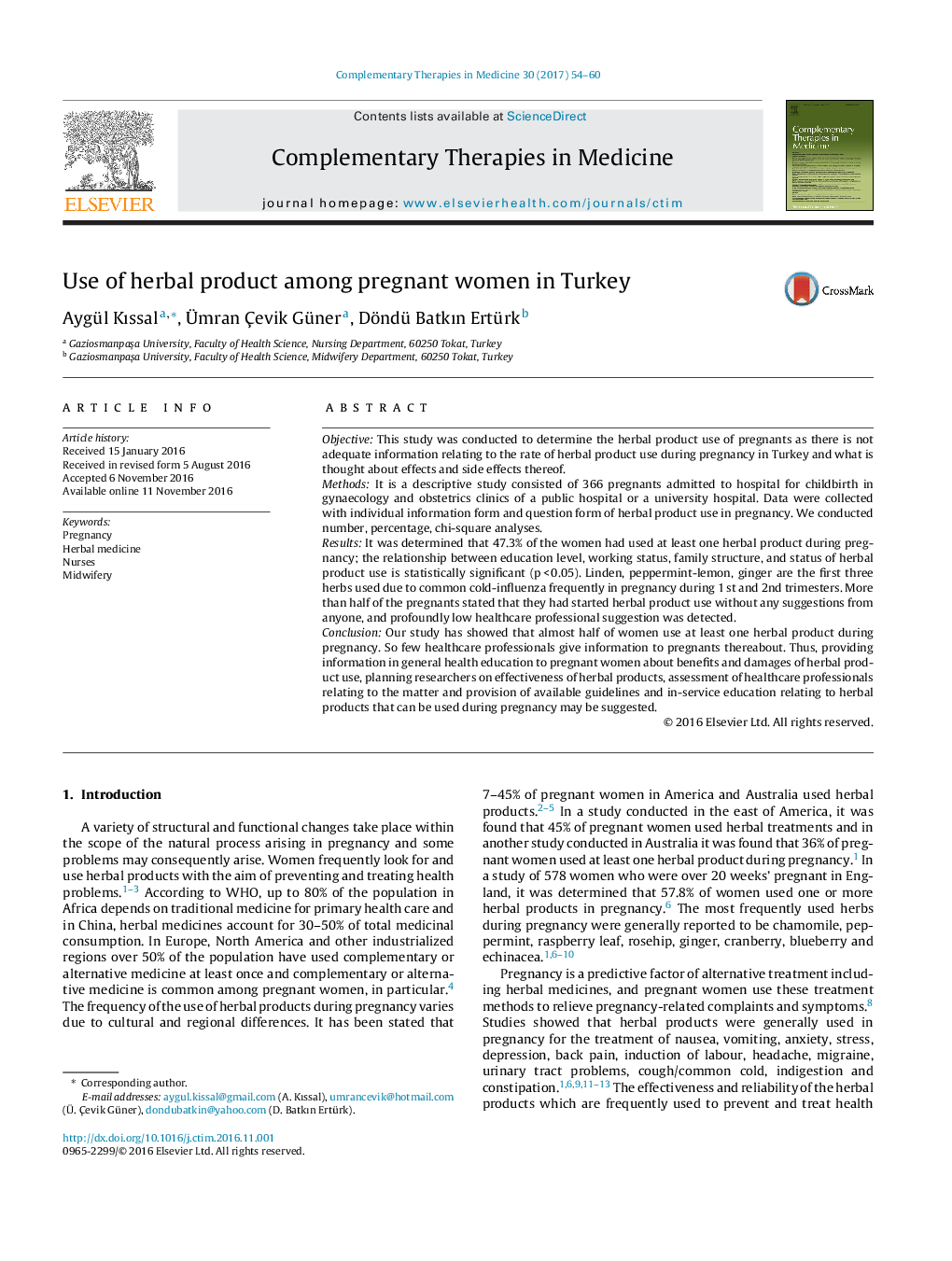| Article ID | Journal | Published Year | Pages | File Type |
|---|---|---|---|---|
| 5565225 | Complementary Therapies in Medicine | 2017 | 7 Pages |
ObjectiveThis study was conducted to determine the herbal product use of pregnants as there is not adequate information relating to the rate of herbal product use during pregnancy in Turkey and what is thought about effects and side effects thereof.MethodsIt is a descriptive study consisted of 366 pregnants admitted to hospital for childbirth in gynaecology and obstetrics clinics of a public hospital or a university hospital. Data were collected with individual information form and question form of herbal product use in pregnancy. We conducted number, percentage, chi-square analyses.ResultsIt was determined that 47.3% of the women had used at least one herbal product during pregnancy; the relationship between education level, working status, family structure, and status of herbal product use is statistically significant (p < 0.05). Linden, peppermint-lemon, ginger are the first three herbs used due to common cold-influenza frequently in pregnancy during 1 st and 2nd trimesters. More than half of the pregnants stated that they had started herbal product use without any suggestions from anyone, and profoundly low healthcare professional suggestion was detected.ConclusionOur study has showed that almost half of women use at least one herbal product during pregnancy. So few healthcare professionals give information to pregnants thereabout. Thus, providing information in general health education to pregnant women about benefits and damages of herbal product use, planning researchers on effectiveness of herbal products, assessment of healthcare professionals relating to the matter and provision of available guidelines and in-service education relating to herbal products that can be used during pregnancy may be suggested.
